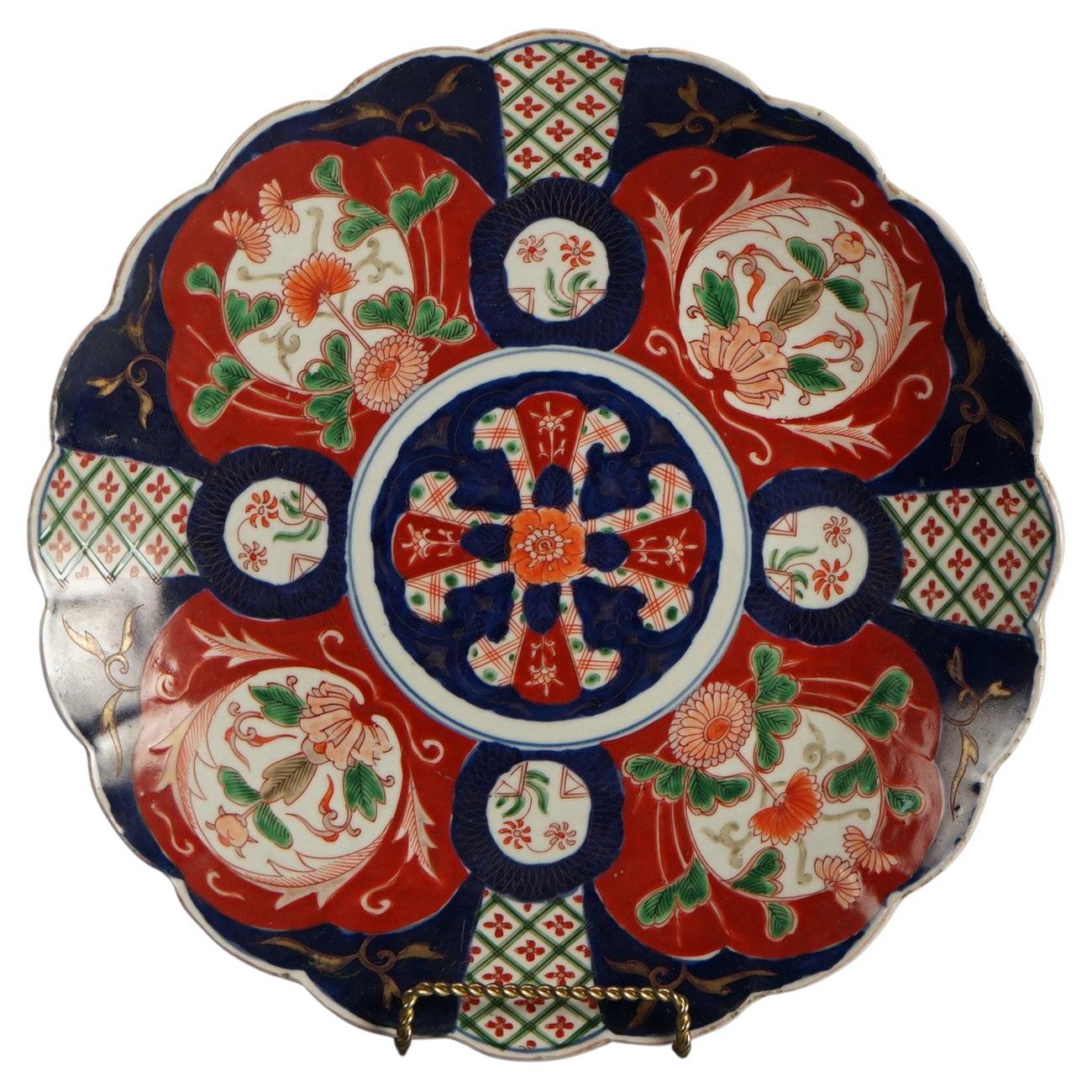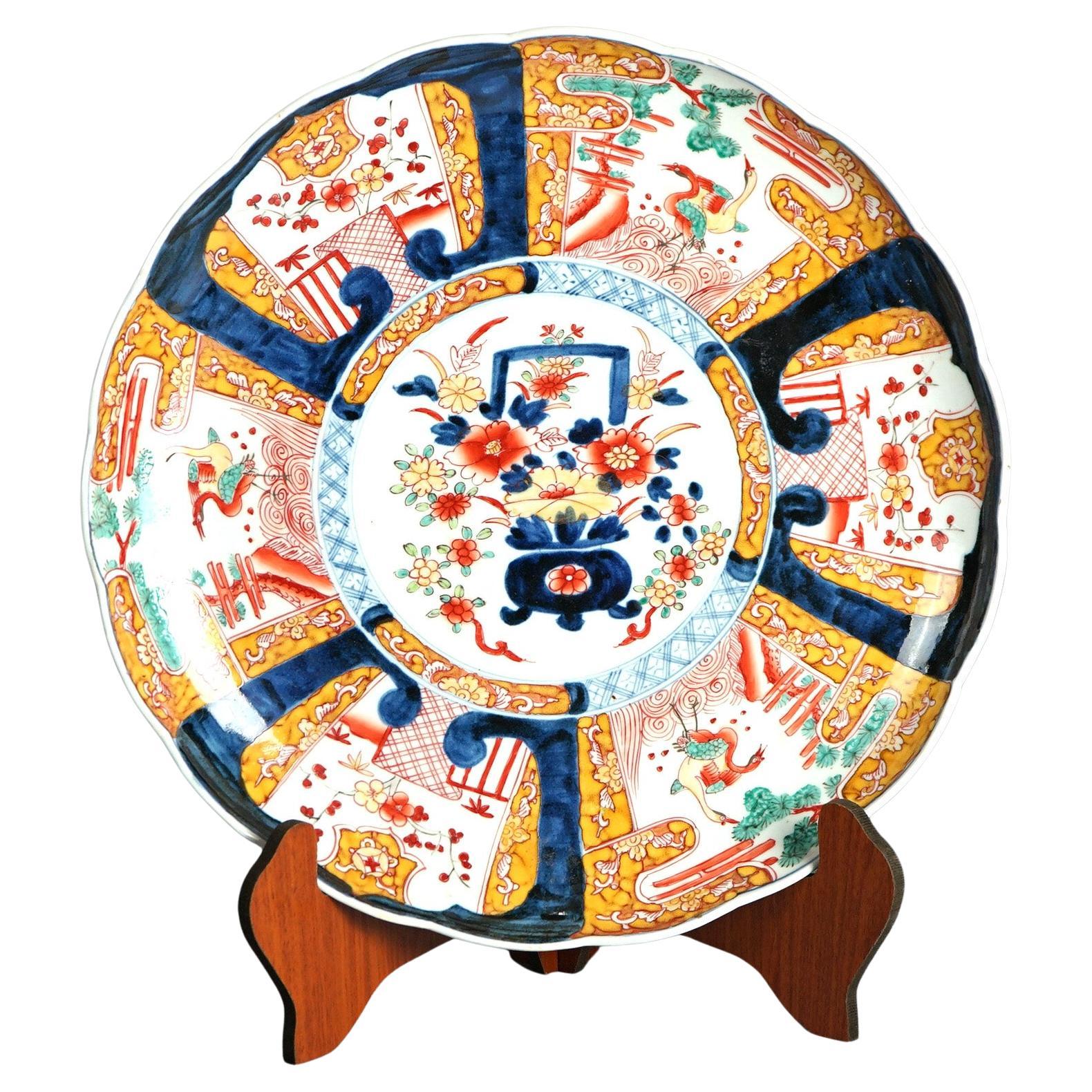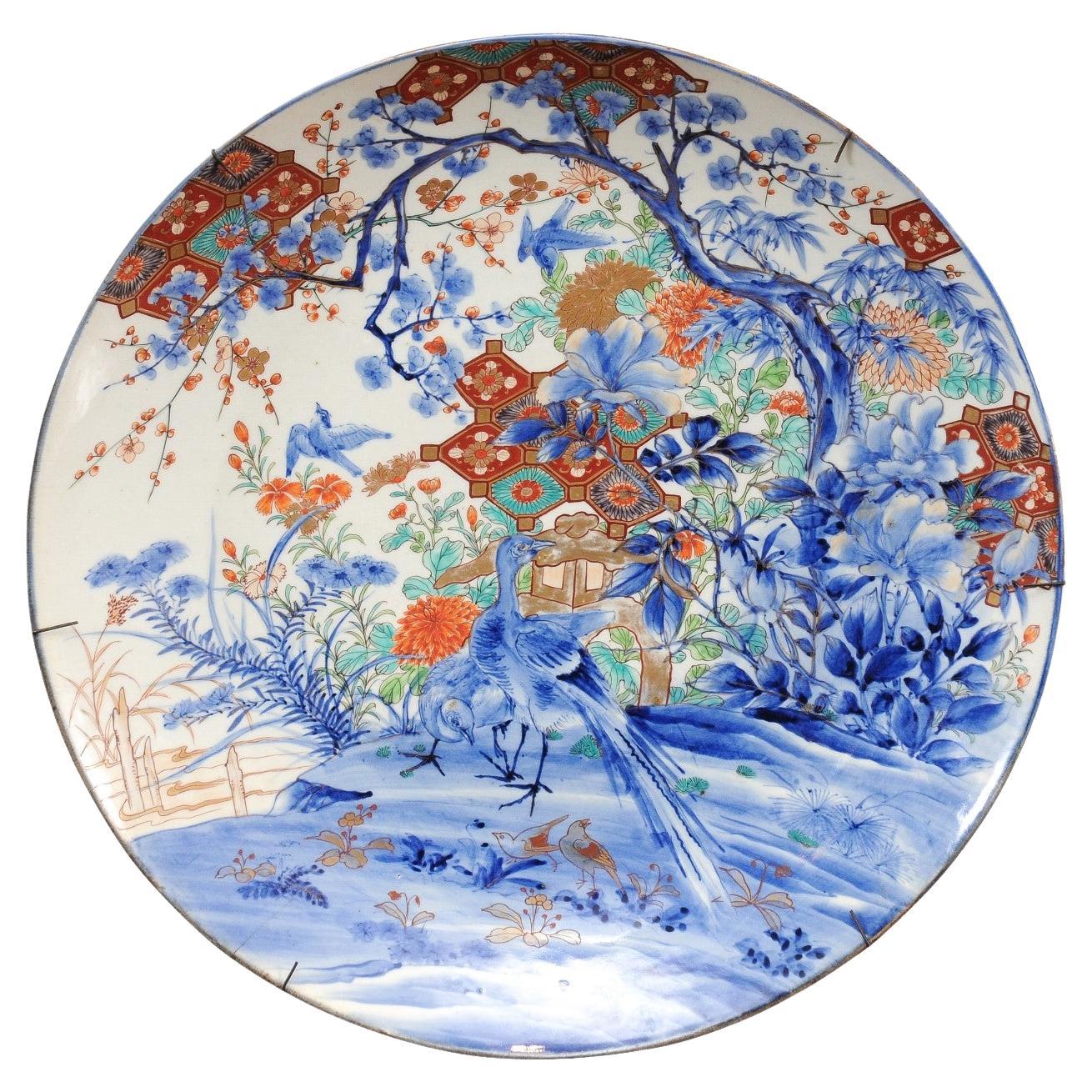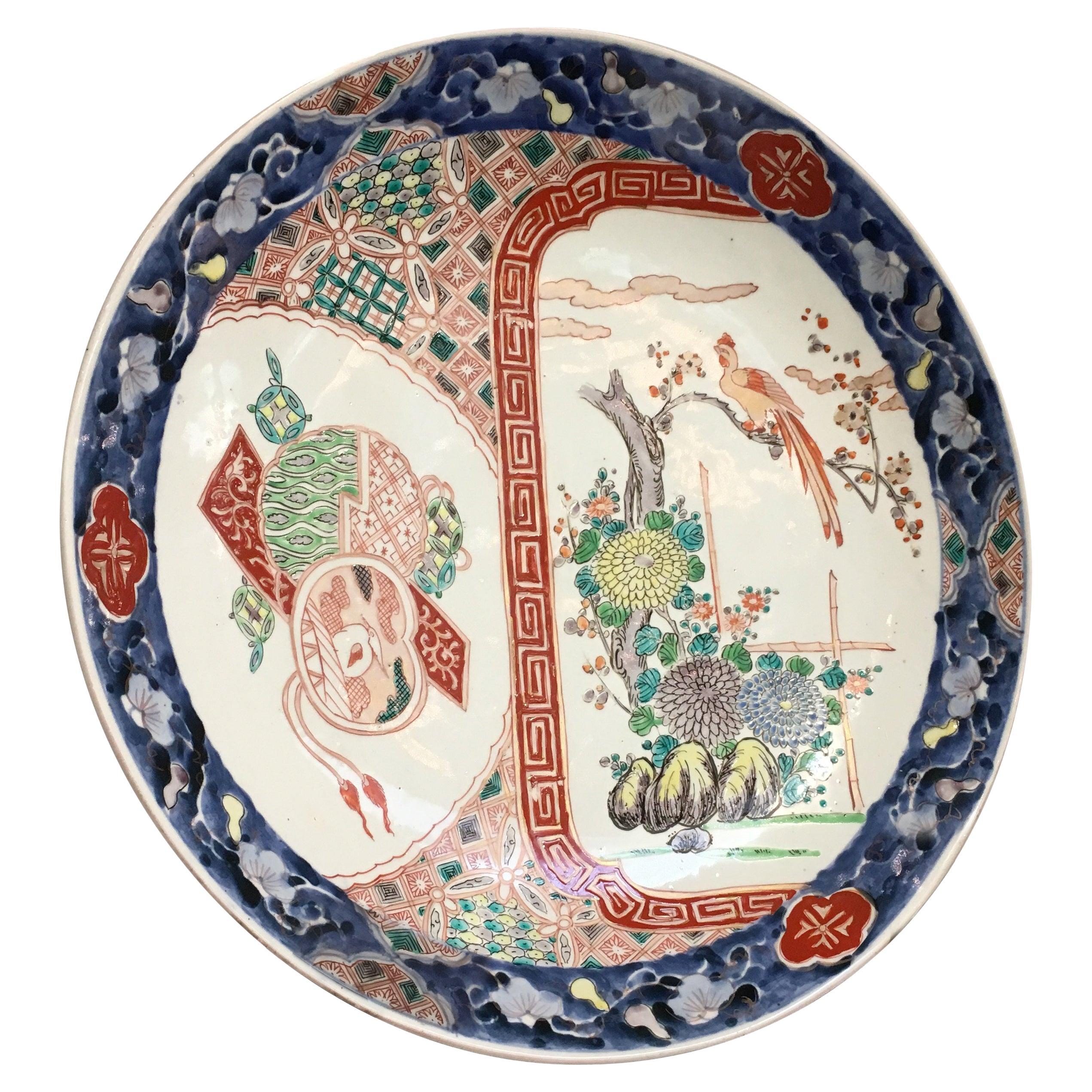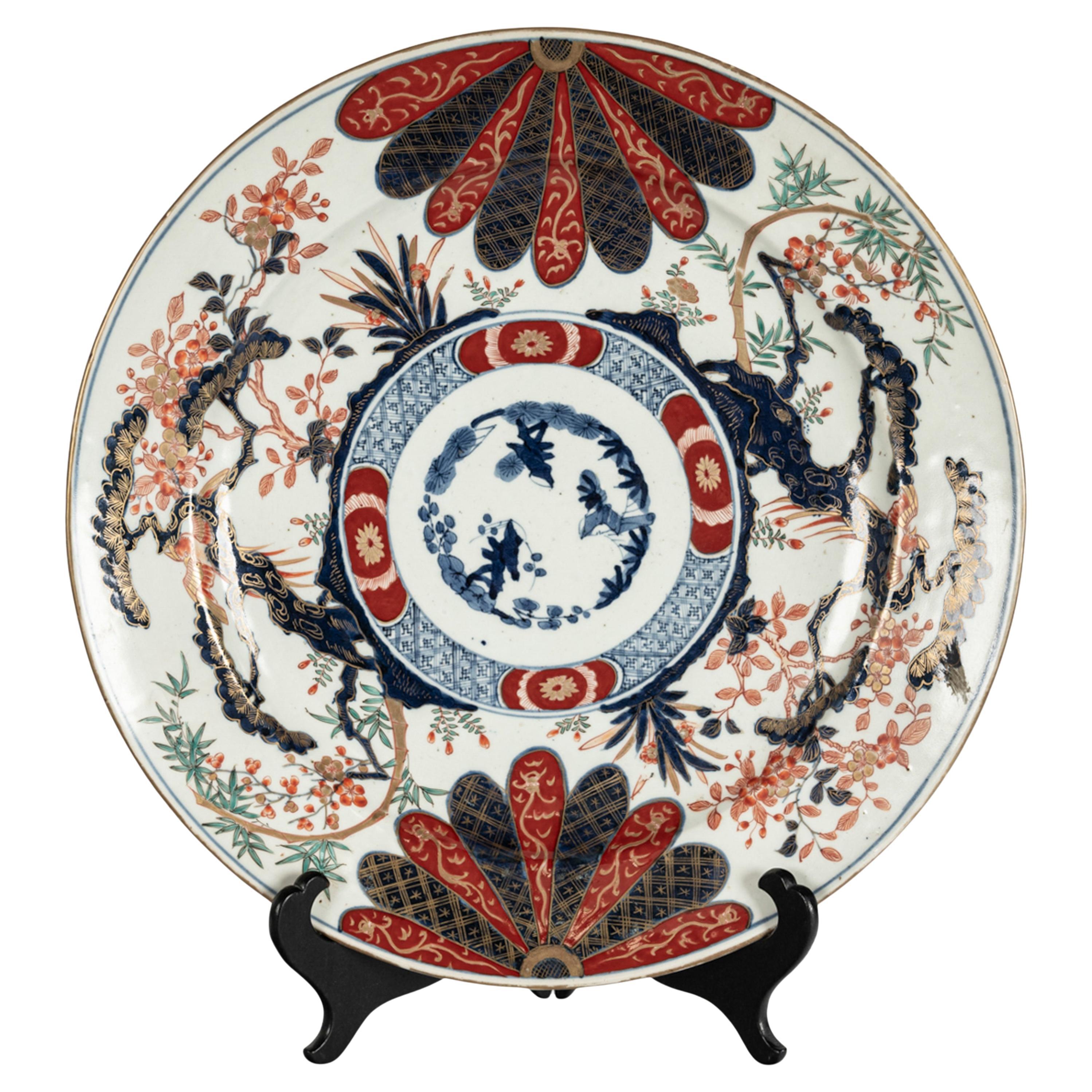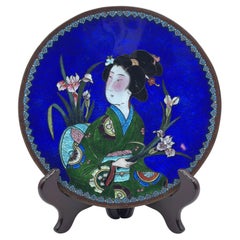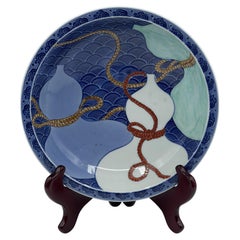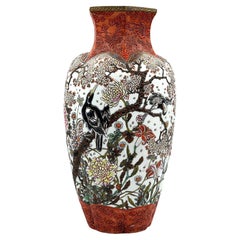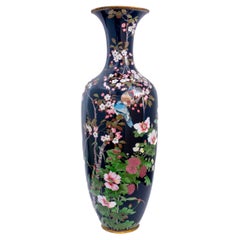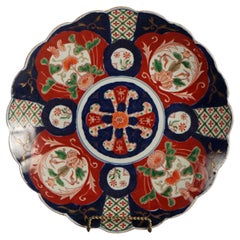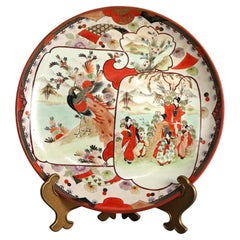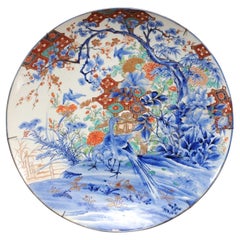Items Similar to Japanese Meiji Period Imari Porcelain Charger with Flowers and Bees, ca. 1900
Want more images or videos?
Request additional images or videos from the seller
1 of 5
Japanese Meiji Period Imari Porcelain Charger with Flowers and Bees, ca. 1900
$2,500
£1,920.66
€2,206.81
CA$3,516.56
A$3,950.70
CHF 2,064.25
MX$48,220.11
NOK 26,209.89
SEK 24,671.09
DKK 16,468.06
About the Item
Japanese Meiji Period Imari Porcelain Charger with Flower and Bees, ca. 1900
DIMENSIONS:
Diameter: 16 inches
DETAILS
Meiji Period: 1868-1912
ABOUT IMARI PORCELAIN
Japanese Imari porcelain refers to a type of porcelain ware that was produced in the town of Arita, in Saga Prefecture on Japan’s Kyushu island, and exported primarily from the nearby port of Imari—hence the name.
Origins & History:
• Early 17th century (Edo period): Porcelain production began in Arita after Korean potters, brought to Japan during the Japanese invasions of Korea (1592–1598), discovered kaolin (porcelain clay) in the area.
• Mid-17th century to 18th century: Imari ware became a major export to Europe via the Dutch East India Company.
• Declined in export after 1750s as Chinese porcelain re-entered European markets.
Characteristics:
• Base: Made from fine white porcelain.
• Decoration: Richly colored and ornate, featuring:
o Underglaze blue painting (Arita blue-and-white style).
o Overglaze enamels, especially in red, gold, green, and blue (the classic “Kinrande” Imari style).
• Designs: Often feature floral motifs, birds, mythical creatures, and geometric patterns in bold symmetrical compositions.
Types of Imari:
1. Early Imari / Shoki-Imari (early 1600s): Simpler blue-and-white designs.
2. Kakiemon Imari (mid-1600s onward): A refined, more minimal style using bright overglaze enamels.
3. Kinrande Imari (late 1600s–1700s): Lavish use of red, gold, and cobalt blue—what most Westerners identify as "Imari."
Influence:
• Heavily influenced European porcelain production (e.g., Meissen in Germany, Chantilly in France).
• Still collected and admired today for its craftsmanship and vivid aesthetics.
- Dimensions:Height: 1 in (2.54 cm)Diameter: 16 in (40.64 cm)
- Style:Japonisme (Of the Period)
- Materials and Techniques:
- Place of Origin:
- Period:
- Date of Manufacture:ca. 1900
- Condition:Wear consistent with age and use. We make our best effort to provide a fair and descriptive condition report. Please examine photos attentively, as they are part of the description. Send us a message to request more details or discuss price.2.
- Seller Location:New York, NY
- Reference Number:1stDibs: LU2819345027712
About the Seller
5.0
Gold Seller
Premium sellers maintaining a 4.3+ rating and 24-hour response times
Established in 1993
1stDibs seller since 2017
83 sales on 1stDibs
Typical response time: 14 hours
- ShippingRetrieving quote...Shipping from: New York, NY
- Return Policy
Authenticity Guarantee
In the unlikely event there’s an issue with an item’s authenticity, contact us within 1 year for a full refund. DetailsMoney-Back Guarantee
If your item is not as described, is damaged in transit, or does not arrive, contact us within 7 days for a full refund. Details24-Hour Cancellation
You have a 24-hour grace period in which to reconsider your purchase, with no questions asked.Vetted Professional Sellers
Our world-class sellers must adhere to strict standards for service and quality, maintaining the integrity of our listings.Price-Match Guarantee
If you find that a seller listed the same item for a lower price elsewhere, we’ll match it.Trusted Global Delivery
Our best-in-class carrier network provides specialized shipping options worldwide, including custom delivery.More From This Seller
View AllJapanese Meiji Period Ukyoi Cloisonné Plate with Bijin Holding Irises, Ca. 1890
Located in New York, NY
Japanese Meiji Period Ukyoi-style Cloisonné Plate Depicting a Bijin with Irises, Ca. 1890
PERIOD
Meiji Period: 1868-1912
DIMENSIONS
Diameter: 9.75 inches
Depth: 0.5 inches
ABOUT
...
Category
Antique 1890s Japanese Japonisme Decorative Art
Materials
Metal
Japanese Edo Period Nabashima Porcelain Plate with Three Sake Bottles, Ca. 1850
Located in New York, NY
Japanese Edo Period Nabashima Porcelain Blue Plate with Three Sake Bottles, Ca. 1850
PERIOD
Edo Period ((1603-1868) – Mid-19...
Category
Antique 1850s Japanese Japonisme Decorative Art
Materials
Porcelain
Japanese Meiji Period Porcelain Vase by Shimazu Gyokuzan, Ca. 1890
Located in New York, NY
Japanese Meiji Period Porcelain Vase by Shimazu Gyokuzan, Ca. 1890
DIMENSIONS
Height: 18.5 INCHES
Diameter: 9 inches
DETAILS
Meiji Period (1868 -1912) – Ca.18...
Category
Antique 1890s Japanese Japonisme Vases
Materials
Porcelain
Japanese Large Cloisonné Vase, Ca. 1900/1910
Located in New York, NY
Japanese Large Cloisonné Vase in Midnight Blue w/ Flowers and Birds, Ca. 1900/1910
DIMENSIONS:
Height: 46 inches
Diameter: 51.5 inches
ABOUT
This exquisite vase is a remarkable te...
Category
Antique Early 1900s Japanese Japonisme Vases
Materials
Metal
Japanese Meiji Period Cloisonné Vase with Samurai and Floral Motif, Ca. 1890
Located in New York, NY
Japanese Meiji Period Cloisonné Vase w/ Samurai, Attendant, and Floral Motif, Ca. 1890
DIMENSIONS:
Height: 12 inches
Diameter: 5.5 inches
ABOUT
An elegant cloisonné enamel vase fr...
Category
Antique 1890s Japanese Japonisme Vases
Materials
Porcelain
Japanese Late Meiji Period Satsuma Three-Footed Vase, Ca. 1900
Located in New York, NY
Japanese Late Meiji Period Satsuma Three-Footed Vase, Ca. 1900
Late Meiji Period (1868-1912)
DIMENSIONS:
Height: 10.25 inches
Di...
Category
Antique Early 1900s Japanese Japonisme Vases
Materials
Porcelain
You May Also Like
Antique Japanese Imari Charger with Garden Flowers C1920
Located in Big Flats, NY
Antique Japanese Imari Charger with Garden Flowers C1920
Measures- 2''H x 12.5''W x 12.5''D
Category
Early 20th Century Asian Ceramics
Materials
Ceramic
$360 Sale Price
20% Off
Antique Japanese Imari Porcelain Charger with Garden & Genre Scenes C1920
Located in Big Flats, NY
Antique Japanese Imari Porcelain Charger with Garden & Genre Scenes having Figures & Birds C1920
Measures - 2"h x 14.5"diam
Category
Early 20th Century Japanese Ceramics
Materials
Metal, Enamel
$440 Sale Price
20% Off
Japanese Imari Enameled Porcelain Charger With Garden Elements & Birds 20thC
Located in Big Flats, NY
Japanese Imari Enameled Porcelain Charger With Garden Elements & Birds 20thC
Measures - 17 1/4"diam x 2 1/4"h
Category
20th Century Asian Ceramics
Materials
Porcelain
$520 Sale Price
20% Off
Large Japanese Imari Charger with Bird Design, ca. 1850
Located in Atlanta, GA
Large Japanese Imari Charger with Bird Design, ca. 1850
Category
Antique 1850s Japanese Porcelain
Materials
Porcelain
Japanese Imari Charger, Meiji Period, Late 19th Century
Located in Austin, TX
A nicely decorated Japanese Meiji Period Imari charger, late 19th century, Japan.
The porcelain charger featuring a design of a hoho bird, or phoenix, per...
Category
Antique Late 19th Century Japanese Meiji Platters and Serveware
Materials
Enamel
Monumental Antique Japanese Meiji Period Imari Porcelain Charger Plate 1880
Located in Portland, OR
A fine & monumetal Japanese Meiji period Porcelain charger/plate, circa 1890.
The charger is very finely decorated with underglaze blue, red iron oxide glazes and heightened with gil...
Category
Antique 1880s Japanese Meiji Porcelain
Materials
Porcelain
More Ways To Browse
Japan 1900
Japanese Silver And Enamel
Japanese Porcelain Edo
Japanese Porcelain Bird
Japanese Porcelain 17th Century
Chinese Porcelain Blue Birds
Japanese Export Porcelain
French Bee
Porcelain Japanese 1900
Bee Glass
17th Century Chinese Japanese Porcelain
Chinese Blue And White Porcelain With Bird
Chinese Arita China
Japanese Blue And White Porcelain Bird
India Painting 18th Century
17th Century Japanese Paintings
Company Painting India
17th Century German Silver
